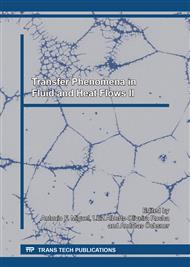p.50
p.60
p.70
p.81
p.91
p.101
p.110
p.122
p.132
Acelerated Test Methods: Determining the Diffusion Coefficient of Concretes in the Saturated Condition
Abstract:
The chloride diffusion coefficient indicates the capacity of a particular type of concrete to resist chloride penetration and is therefore used to predict the service life of a particular reinforced concrete structure exposed to environments containing this type of aggressive agent. Its experimental determination is time-dependent and time-consuming. For that reason, our study analyzes the characteristic behavior of the diffusion coefficient (D) of concretes in the saturated condition by testing higher NaCl concentrations and lower contamination ages than those used in standardized tests, in addition, the objective is to analyze the behavior of surface chloride concentration (Cs) over time. Therefore, it was concluded that for concrete dosed with pozzolanic cement, the Cs value varied with increasing tendency at higher ages. In addition, the D value obtained by the proposed method presented values close to those obtained by standardized tests at contamination ages of 21 and 35 days.
Info:
Periodical:
Pages:
91-100
Citation:
Online since:
March 2017
Keywords:
Price:
Сopyright:
© 2016 Trans Tech Publications Ltd. All Rights Reserved
Share:
Citation:


